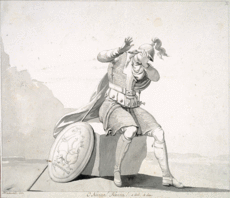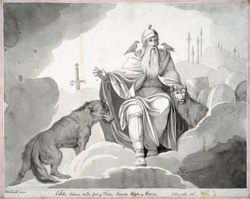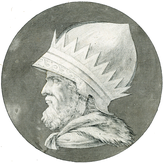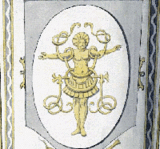A portrait of Gorm the Old
In the 1700s many translations and interpretations of Nordic poetry were published. This inspired various ballad operas and dramas in the national spirit of the period and Nordic prehistory was also experimented with in the theatre in visual form. However, the actual knowledge at the time about customs of dress and weapons in the prehistoric period was somewhat inaccurate.
Johannes Wiedewelt
Johannes Wiedewelt (1731-1802) is the first Danish artist who studied Nordic prehistory and antiquities in the Royal Art Museum with the aim of creating a more realistic Nordic environment in his works. In 1794 Wiedewelt displayed plaster busts of legendary Danish kings. The busts no longer exist, but the drawings are preserved, amongst them an imaginative portrait of Gorm the Old.
Wiedewelt obtained further historical works for his studies. Amongst them were antiquary Peter Frederik Suhm’s popular publication On Odin and the Heathen Myths (1771) and Professor Ole Worm’s work on the Danish monuments (1643). It is also possible that he had access to Stephanus Johannis Stephanius’ edition of Saxo from 1645.
A number of sketches made in the 1780s for the poet Johannes Ewald’s drama ‘Balder’s death’ are clearly inspired by the pictures of Harald Bluetooth’s large rune stone published in Ole Worm’s work. The large animal can be seen on the god Balder’s round shield and the human figure on the rune stone’s third side appears on a shield in Neoclassical style. A similar shield stands behind the god Odin, who sits on his throne surrounded by the ravens Huginn and Muninn and the two wolves Geri and Freki.





